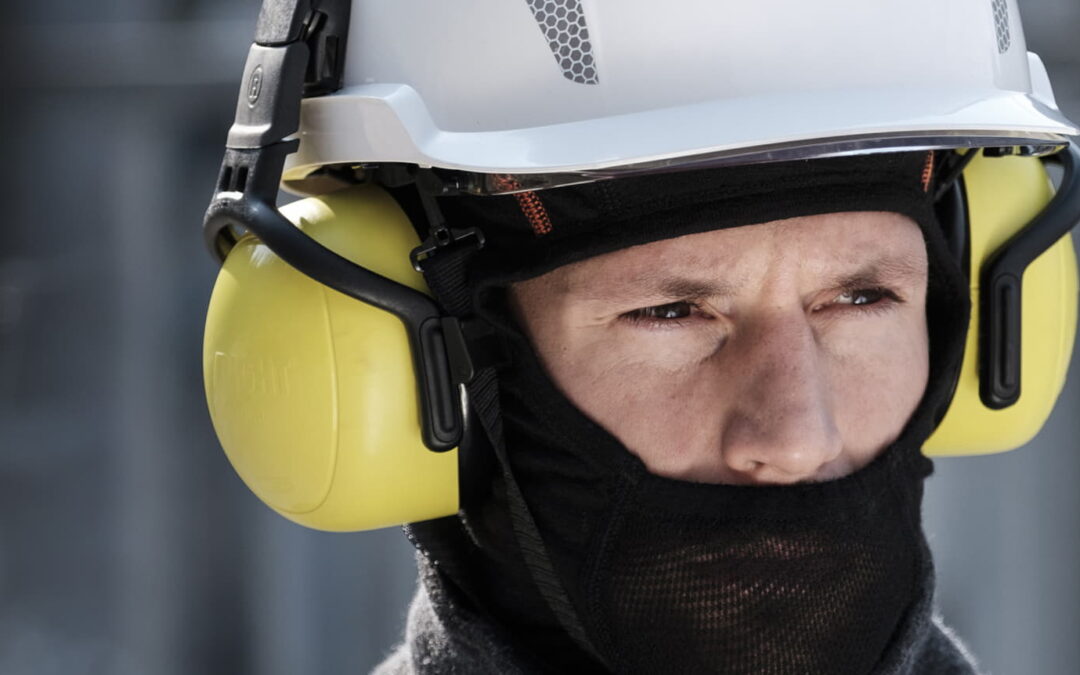As our workplaces continue to evolve, so do the potential risks to our hearing. Noise-induced hearing loss is a gradual and irreversible condition that occurs when the delicate structures of the inner ear sustain damage from prolonged exposure to loud noises.
Shockingly, the World Health Organization estimates that an alarming 1.1 billion young people are at risk of developing NIHL due to unsafe listening practices. To combat this growing concern, hearing safety equipment steps in as a vital line of defense.
By creating a barrier between our ears and excessive noise, these specialized devices play a pivotal role in preventing and reducing the risk of NIHL. Earmuffs, earplugs, and other innovative solutions work together to reduce the intensity of sound reaching our auditory system.
The Role of Hearing Safety Equipment
In today’s noisy world, the importance of protecting our hearing cannot be overstated. That’s where ear protection equipment comes into play. These innovative devices play a pivotal role in preventing and reducing the risk of Noise-Induced Hearing Loss (NIHL).
Hearing protection gears encompass various options, including earmuffs, earplugs, and other specialized devices designed to reduce the intensity of sound reaching the ear. By creating a physical barrier, these essential tools help protect our sensitive auditory system from potential damage.
Imagine a bustling construction site or a loud concert venue – these environments can expose us to dangerously high levels of noise that can harm our hearing over time. However, with the right hearing protection tool in place, we can effectively minimize the impact of these loud sounds on our ears.
Types of Hearing Safety Equipment
The following are some valuable ear protection tools that can serve great benefits in terms of your ear’s safety:
-
Earmuffs
These are protective headsets that cover the entire ear, forming an acoustic seal. Earmuffs are effective at blocking out loud noises and are often used in industries such as construction, manufacturing, and aviation.
-
Earplugs
Earplugs are small, soft inserts placed inside the ear canal. They come in various shapes and materials, allowing for a comfortable and snug fit. Earplugs are portable and convenient, making them suitable for workers who need to move around frequently.
-
Communication Headsets
Communication headsets provide hearing protection while enabling workers to communicate with each other using built-in microphones and speakers. These headsets are commonly used in industries like transportation, security, and manufacturing.
Benefits of Using Hearing Safety Equipment
Below are some practical benefits of utilizing ear safety equipment:
- Prevention of Hearing Loss: The primary benefit of using these protection equipment is preventing noise-induced hearing loss. By reducing exposure to excessive noise levels, these devices help maintain the integrity of our auditory system.
- Enhanced Workplace Safety: Ear safety equipment not only protects our ears but also contributes to overall workplace safety. When workers can hear clearly, they can better detect warning signals, communicate effectively, and avoid accidents.
- Increased Productivity: Excessive noise can be distracting and disrupt concentration. By wearing ear safety gear, employees can focus on their tasks better, leading to increased productivity and quality of work.
- Compliance with Regulations: Many countries have established regulations and standards for workplace noise exposure. By promoting ear protection equipment, employers can ensure compliance with these regulations.
Conclusion
Maintaining good hearing health is essential both personally and professionally. The use of hearing safety equipment in the workplace is vital for preventing noise-induced hearing loss.
By prioritizing hearing protection, we can create healthier workplaces where employees can thrive without compromising their long-term auditory health.
